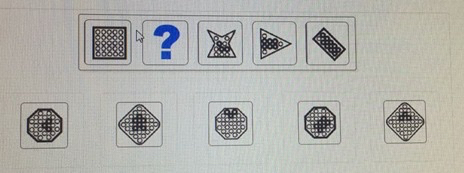Hi I saw this sequence and cant's stop thinking about it.
I was guessing that the number of thick-walled dots represents the number of sides for the next shape in the sequence
the 3rd shape has 3 thick-walled dots, and the 4th has 3 sides
the 4th has 6 dots, and the 5th could be said to have 6 sides (though that's a stretch.....)
and maybe a rounded box is considered to have 0 sides?
It just seems that there must be a better explanation, and maybe a whole different answer.
EDIT
I had a new idea, that still feels like a stretch
The solution would be the second figure if we dismiss any relationship between the number of dots and just focus of the shape that the thick-walled dots create.
the 4th makes a rectangle and the next figure is a rectangle. the 3rd makes a triangle and the next figure is a triangle. the 2nd of the options makes some weird shape that might resemble the 3rd, and here starts the stretch I was talking about. finally the 1st does not have a shape with means the next should not have side defined shape and since it has no corners it does not have a side.

